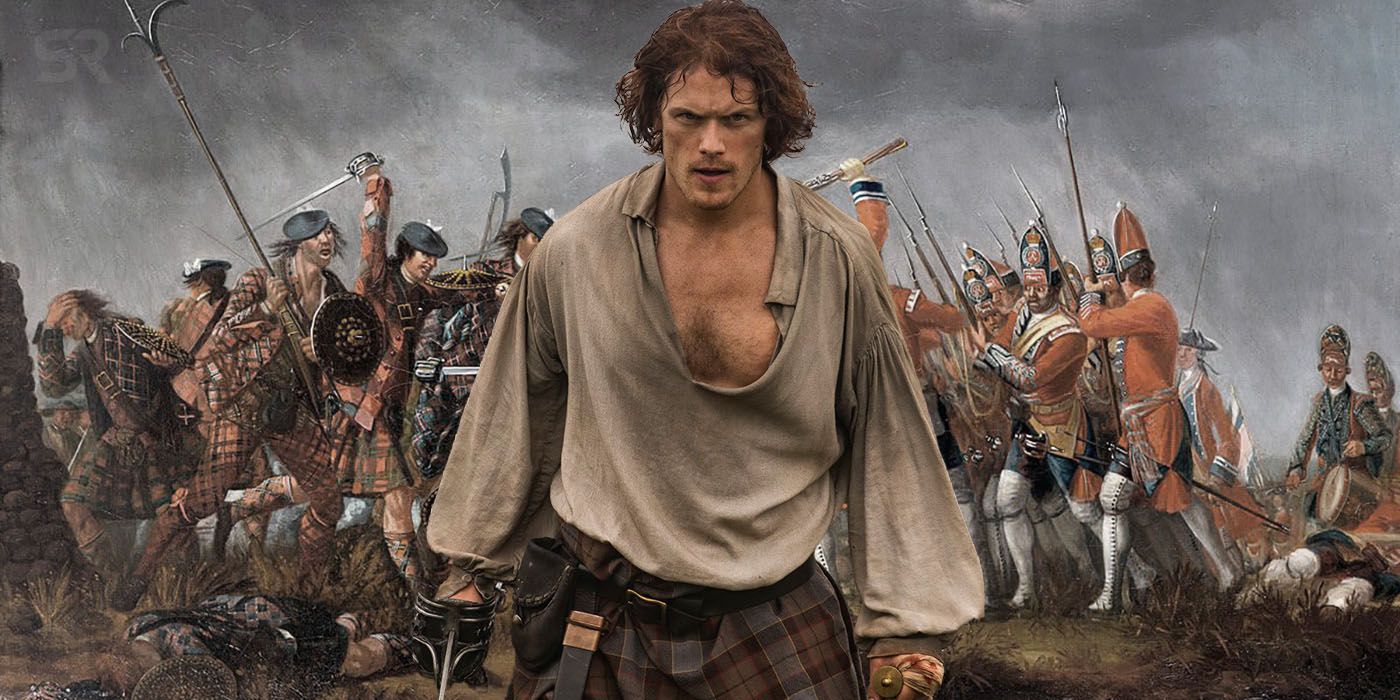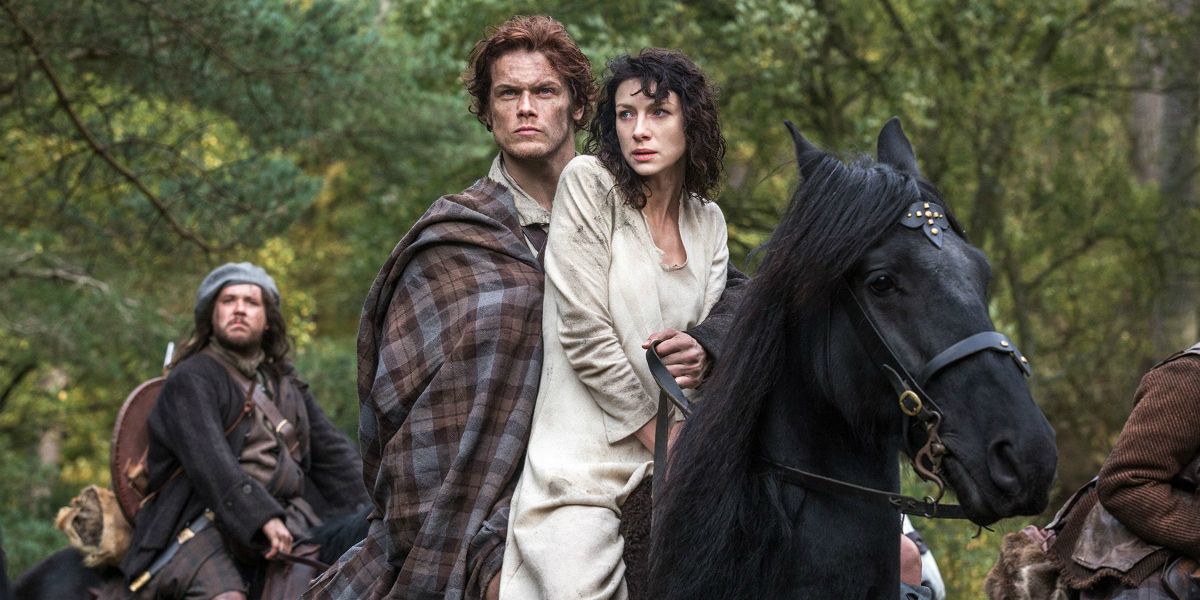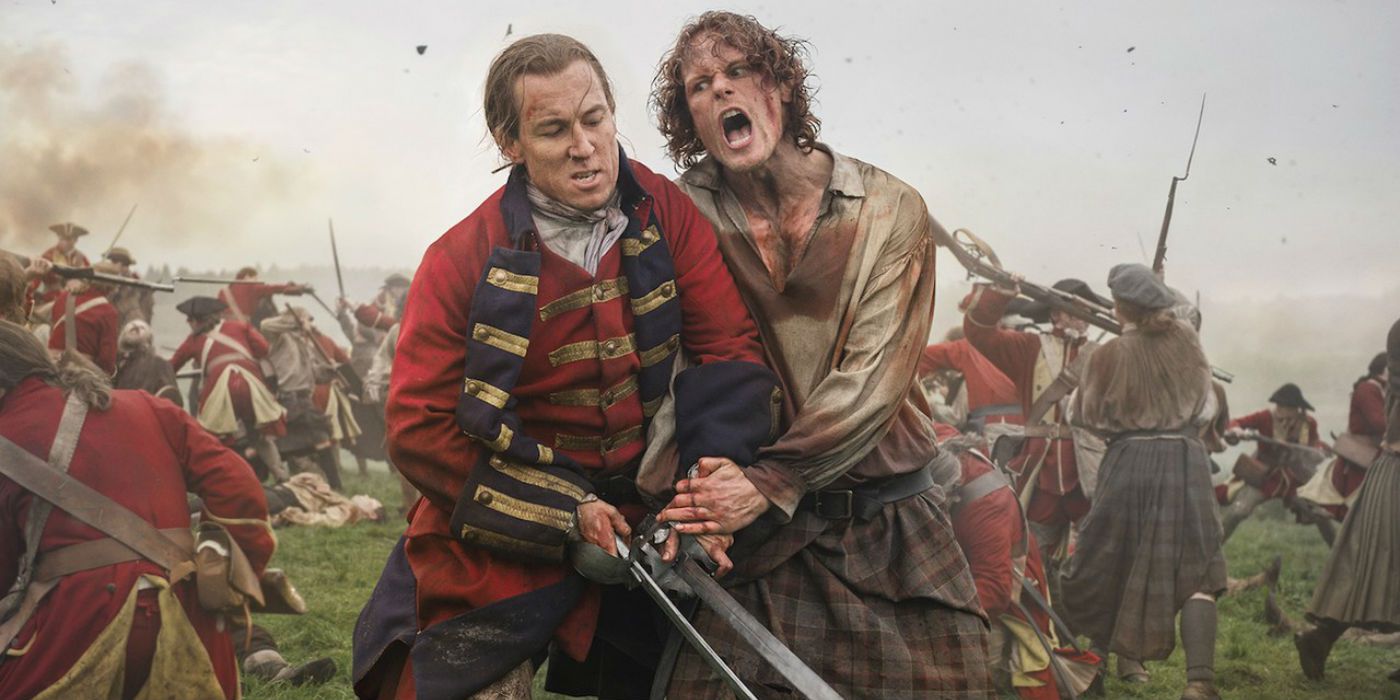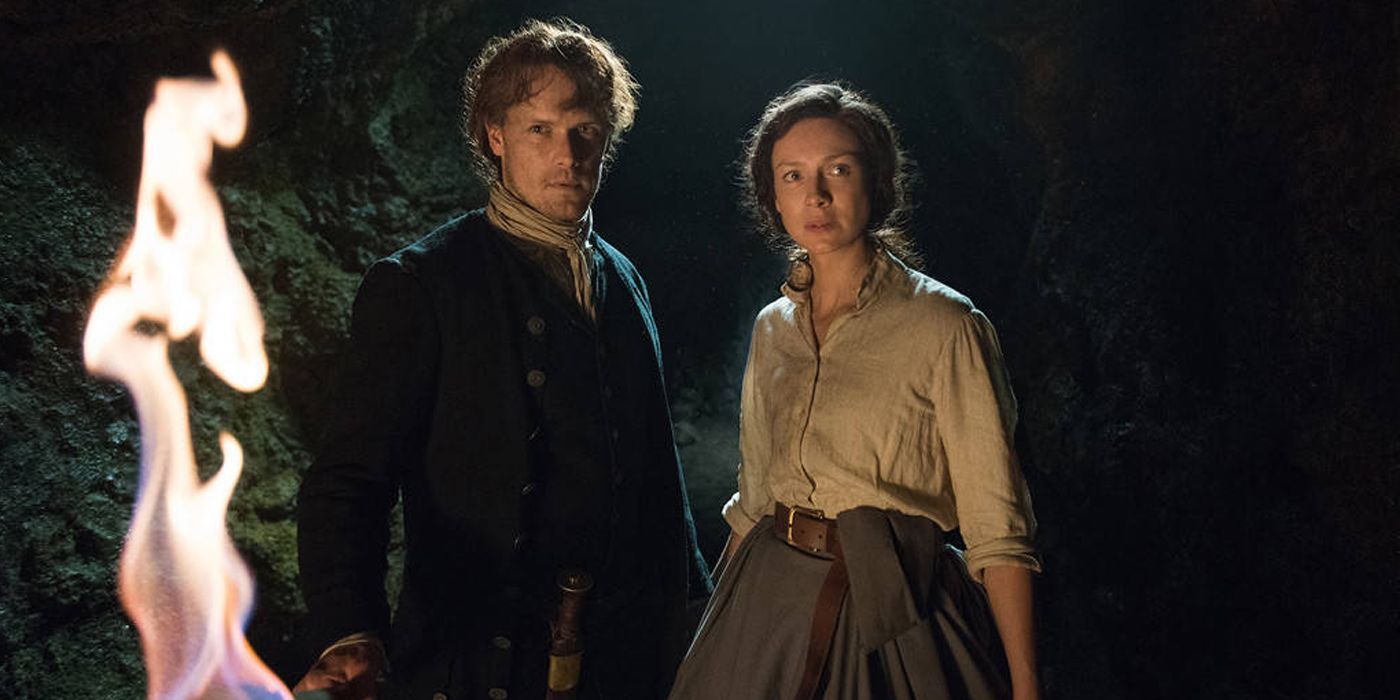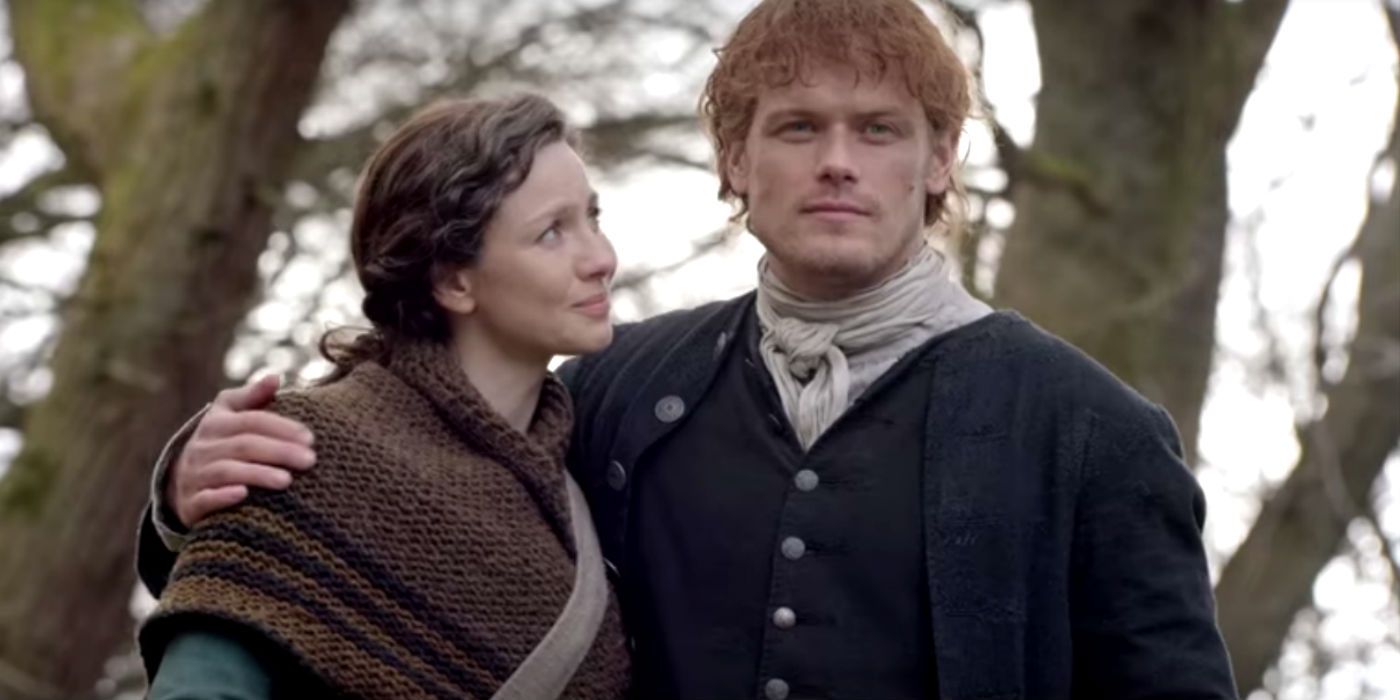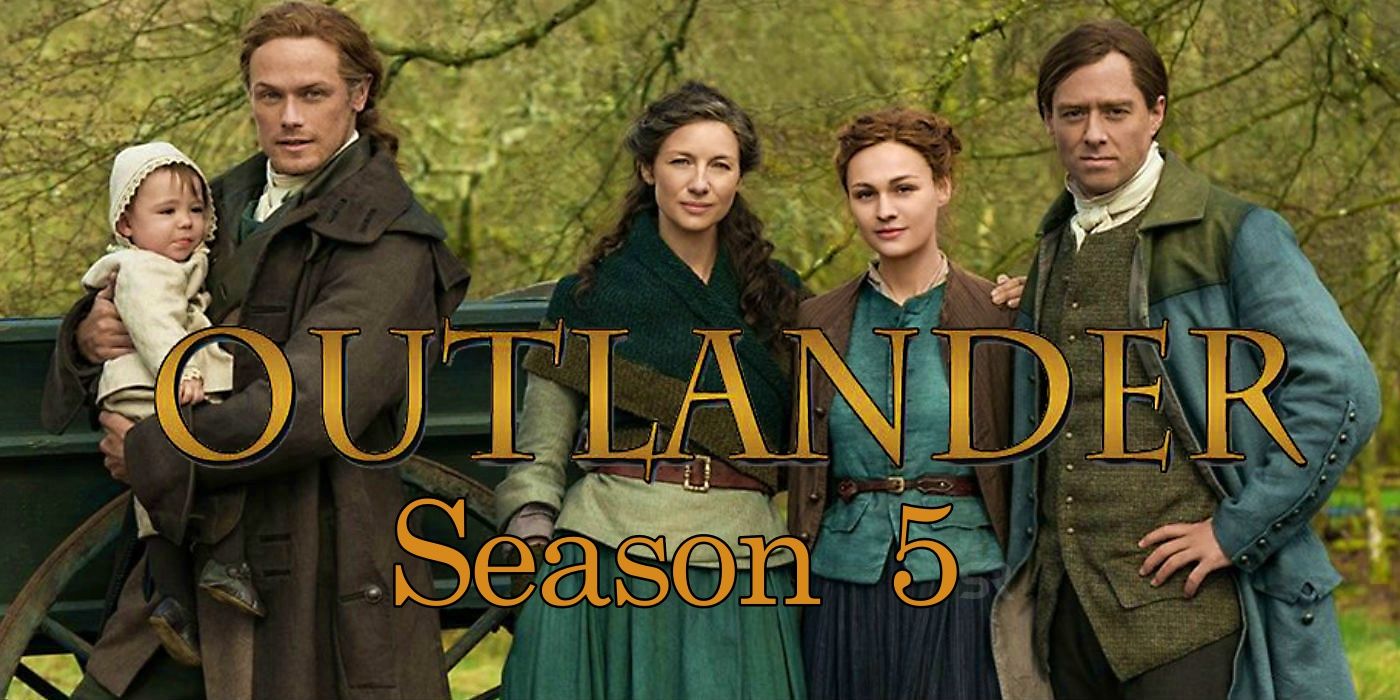Outlander may get to take a few liberties with history thanks to the addition of time travel and magical standing stones, but that doesn't mean that the period drama gets to change whatever it wants. For the most part, the Starz series does draw aim for historical accuracy... and usually hits it. Throughout the series, major historical figures, dates, and events are accurately portrayed and referenced, and the series has been applauded for its incredible costume design.
However, there are also a few areas where the audience is expected to suspend belief (and not just when it comes to the ability to travel through time) because being entirely realistic would just make the series too difficult to watch. Claire's ability to survive socially, and navigate the complexities of custom and etiquette from two hundred years prior is incredibly unrealistic - as is the idea that because she speaks English and French in the 1940s, she would be perfectly understood in those languages in the 1700s. Language changes over time, and this would build a pretty big barrier to understanding.
Dental health and general hygiene also gets a pass, as modern audiences wouldn't be too happy about seeing characters in a romance series missing teeth and covered in filth! Those things aside, though, here are the major moments that the series gets right... and a few that it gets very wrong.
Season One: Witch Trials And Tartan
Outlander's first season is largely historically accurate, once you get past the whole 'time travel' part of things. The Second World War did, of course, happen and end in the 1940s, and a married couple like Claire and Frank may well have not seen each other for years (especially with Claire also involved in the war as a combat nurse). That said, while the war 'ended' in 1945, it's slightly unrealistic to think that both Frank and Claire would not only be home, but be reunited and able to plan a trip quite this quickly after the war's end. Rationing in the UK was still very much in place, and wasn't entirely phased out until the 1950s, and the Scotland that the two would have visited would have still been very much recovering from the war.
After Claire goes back in time, she meets Jamie, who is a member of the Fraser clan - a clan which did exist at the time. In fact, Jamie is based on a real member of this clan - but that will be covered later. However, it's been pointed out that while the Fraser clan existed, the Frasers in the series are wearing the "wrong" tartan. According to current clan tartans, Jamie should have been wearing a bold red and green tartan, but in the show is seen in the grey and blue tartans that belonged to a related clan - the Lowland Frasers. However, as the costume designer has pointed out, this was actually intentional, and designed to be more in line with the colors that would have been available from local plants during that time. And while most of the background of the Jacobite uprising is correct, it's a bit oversimplified. There's also one major issue with this season: the witch trial that nearly loses Claire her life. Clearly intended to show how a 'modern woman' would be received in the past, the problem is that the last recorded Scottish witch trial was in 1722, and Claire's would have been in 1743.
Season Two: Culloden And Costuming
Outlander season 2 shifts between Paris and France, during the build-up to the Jacobite Rebellion and the Battle of Culloden. Unsurprisingly, most of the bare-bones facts of this period are spot on. Bonny Prince Charlie was in Paris in 1744, attempting to raise himself an army to take a shot at reclaiming the British throne. The battle at Prestonpans did take place, as did the early battles that saw the Jacobite army winning various towns and cities up until the Battle of Culloden. As the series shows, Culloden was a devastating loss for the Scottish, and turned into a massacre, after which Prince Charles fled. There were a few inconsistencies in the battle, however - in reality, there were Scots on both sides of the fight, and most of the Highlanders would have been carrying targes (small shields), not just blades.
These are very small inconsistencies, however, and the majority of the season is extremely accurate - even where fans might not expect it to be. Lord Lovat was a real person (Simon Fraser was the 11th Lord Lovat), although it's not known if his personality is quite that of the man in the show (and the real Simon Fraser did not have a son named Jamie). The costuming in France, although extremely dramatic, is also based in reality. Interviews with the costume designers show precedent for the revealing outfits - including that famous 'swan dress' (aka 'the nipple dress').
RELATED: Outlander: 10 Facts About Claire & Frank From The Books The Show Leaves Out
Season Three: Farmhouses And Pirates
Outlander season 3 starts with a scene that is lifted directly from the pages of history: Jamie hiding with his men in a farmhouse, and becoming the only survivor. This is based on an account from the book Prince In The Heather, which Gabaldon used as inspiration for Jamie's character in the series (the book claims that the man who survived this hideout was a Fraser). The depiction of Jamaica as a center for the slave trade and for sugar is also fitting for the period, as is Claire's attendance at medical school. While women were not commonly university-educated (especially as doctors) in the 1950s, some did. Claire as the only female student would reflect this accurately.
However, there are a couple of fairly sizable inaccuracies in this season - specifically the pirates who took Young Ian, and Geillis' set-up in Jamaica. The majority of piracy in this time period, especially out of the Caribbean, would have been focused on trade vessels between South America, the New World, and parts of Southern Europe and Africa. While there are records of ships stealing people in raids on the UK, the majority of these are in the southwest (Cornwall, for example), or up into the Orkneys. Although it's not clear exactly where Ian is captured, it's likely to be on the other side of Scotland - where pirate raids were much less common. Of course, it could be argued that this wasn't a random raid, but a targeted one, however, there's some liberty being taken with the history of piracy here. Similarly, while it would have been legally possible for Geillis to have inherited a plantation from her husband (only if he made a will and had no male heirs), it would have been likely that a male relative could have challenged her for it. And living in the manner that she does, even with her charming and manipulative personality, would have raised some serious eyebrows, given the time period.
Season Four: The Colonies
The most recent season of Outlander takes place primarily in the colonies, and without any specific battles to anchor the series in history. However, there are many elements in this season that line up with what we know of real life in the area at the time. Wilmington would definitely have existed at this point, as Claire and Jamie arrive there in 1767, and Wilmington was named in 1739/1740. The raising of militias and incentives for colonists to stay are very well represented, as well. There has been much discussion over the accuracy of the portrayal of the native tribes that Jamie and Claire encounter, as this is obviously a subject that has to be carefully handled. However, the show's EP, Matthew B Roberts, flew to North Carolina to consult with a Cherokee leader there and ensure that Outlander is adapting the original story in a way that is as sensitive and accurate as possible.
While all this is accurate, there are some elements of this season that leave fans a little confused, though. Brianna and Roger are both able to get to the New World with relative ease, and find each other (and Claire and Jamie) there - something that would have been incredibly difficult and expensive in real life. Brianna takes on an indentured servant, which was actually a relatively common way for the poorer classes to essentially buy passage that they couldn't afford, but the ease and speed of travel definitely seems sped up in order to make for good television.
RELATED: Outlander: 10 Hidden Facts About Jamie Only True Fans Noticed
Season 5 And Beyond
Heading into the next season of Outlander means heading back to the realm of exact dates and historical battles, as Claire and Jamie are about to get sucked into the Revolutionary War. As with the Battle of Culloden and the battles leading up to it, it's likely that fans will see a lot of Claire and Jamie being affected by real-life skirmishes, and if the series continues to follow the books, they will eventually meet some very big names in American history, too!

